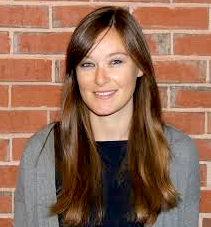We’re back—called to return to the academic grind after weeks of sun-drenched days taken at a slower pace. As I settled down to plan my classes, the ease of summer came to abrupt end with the news out of Charlottesville. I was reminded that, yes, fascism is coming out of the fringe. White supremacy never left. Dangerous ideologies are no longer hiding in dark corners of the internet.

In my car one morning, I listened, astounded, as an expert on white supremacist hate groups explained that many of the members of such groups are college-educated. How, I thought, does one go through college and have these attitudes unchecked or unchanged? Isn’t one of the goals of our work in higher education to create critical thinkers less prone to biases and prejudice? Surely, we succeed in many cases. But, could we be doing more to help students examine the basis, or lack thereof, of their beliefs? And if so, where would we even begin?
A first step would be to talk about contentious subjects in our classrooms—those which reveal the various beliefs and biases that guide thought and action, whether explicitly or implicitly. From there, we could help our students to examine and evaluate those beliefs and consider others. Let’s be clear though: this is a complex, messy undertaking and one which many of us understandably avoid. Raising controversial topics elicits raw, visceral emotions and often leads to an unproductive tension and division among people.
The question then becomes, how do we incorporate current social issues into our coursework? Admittedly, it’s easier in some disciplines than others, but I think with a bit of imagination and creativity, there is a place for discussing current events, power, and oppression across the disciplines. I’m reminded of a recent article in The Chronicle about a math professor who trained her students to become expert witnesses in court cases about gerrymandering using geometric principles. Or of a nutrition class where the instructor wove in considerations of food access based on socioeconomic status. These two examples illustrate the real-life applications of the subjects we teach. Our content doesn’t occur in a vacuum devoid of a social landscape, so why should our classes? And frankly, connecting our content with social issues makes our classes more interesting, thereby increasing student engagement.
In our efforts to integrate important current topics in our classes, we need support from the university and from each other, to discuss and exchange advice and strategies on doing this well. We will need support in the form of forgiving ourselves if it doesn’t always go well. We will need to recognize that some of our classes may become tense and uncomfortable (as a story I’ll share below illustrates). To actually open minds to consider new viewpoints and shift deep-seated beliefs and biases is a precarious, slow, and often uncomfortable process. But then, such is learning.
I have naively ventured into this work and from those experiences, I have gained a few insights that I will share below for all those considering tackling tough topics in the classroom.
Quickly, the story:
My students and I were studying the amendments and civil rights when I discovered the Netflix documentary 13. It detailed how after the passing of the 13th amendment which barred slavery, police began arresting Black people for minor or nonexistent crimes. It makes the argument that prison labor became a new, more subtle form of servitude. I thought it would not only provide context for the 13th amendment, but that it would help my students explore the historical and systematic basis for the perception of Black criminality.
Afterward, one of my students, an African American male who had spent time incarcerated, vocally resisted the film’s argument. He claimed that the reason Black people were arrested more was because they weren’t as inconspicuous as White people. To support this claim, he cited anecdotal evidence— stories about friends posting incriminating photos and videos online. I tried to ask nonjudgmental questions to get him to think through his position, but I also felt like who was I, a White woman, to challenge someone’s beliefs about the causes of their life experiences? Afterward I considered what it must be like sit in class and have someone tell you that the circumstances of your life were, at least, to some degree, a result of something so large, complex, and outside of your control. That is quite a lot to consider in one sitting. It wasn’t surprising his immediate response was to reject it.
So, what were the lessons I took away from my experiences raising contentious social issues?
- First, read the room and know when it’s time to interject or change the focus. I could tell this student was becoming increasingly agitated. I did not need to push him to keep reconsidering his position. Sometimes, we need to let students sit with a new perspective, piece of information, or idea for a while. If the room gets tense, have students write on their own for a few minutes. That leads me to my second point:
- Be okay with small, incremental steps in tackling a contentious subject. Students may initially resist viewpoints that challenge their existing world views. But we can offer alternative ideas that they may return to when they are in a more open, relaxed frame of mind.
- Create an environment of psychological safety for people to articulate and explore their views. It is unlikely people will be receptive to new ideas without psychological (and physical) safety. One helpful guideline for members of the class to follow is to criticize the idea, not the person. It can also help to stop the discussion to summarize the various views presented and examine them together.
- Use humor to help ease tension and build rapport with and between your students. A good joke can be a sort of “reset” button for the classroom atmosphere.

- Find commonalities. At the end, or even in the middle of the class discussion, remind people what we can and do agree on. If people feel divided and pitted against each other, the psychological safety will disappear and it will feel more like a battle, not a dialogue wherein people will actually listen and absorb others’ views.
As is so often the case, it was hard to tell whether any of the discussions my students and I had about sensitive topics prompted them to examine their beliefs and biases. But if I think back to my undergraduate days, I know that professors and classes that raised these issues left a lasting impact on me that made me a more thoughtful, open, and intellectually humble. If we can do the same for even a small number of students, the work—and the awkwardness of it— is worth the effort.